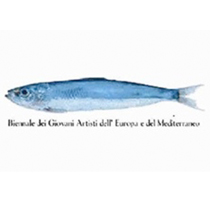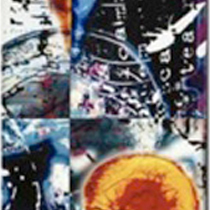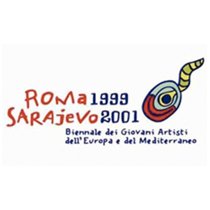17 April – 11 May 1997
The invitation to meet, confront and participate was one of the elements of strength of this edition of the Biennial, which, according to the will of a cultural re-launching of the town, left significant traces in Turin.
In fact the Biennial highlighted the activity of the local artistic communities, especially the young ones, at an international level, it demonstrated that different cultural components of a territory could be joined into a system and it started an important dialogue between culture and enterprises. Furthermore, the Biennial managed to bring the public at large closer to contemporary art and its messages.
It has also been an opportunity to recovering some forgotten spaces of the town for cultural purposes.
This objectives were achieved also trough a reformulation of the general set up of the Biennial, activating connections with other European networks and new Countries on the other shore of the Mediterranean but also in other European areas, promoting new forms of political and cultural dialogue. The new members were: Bosnia-Herzegovina, Jordan, Libya, Lebanon, Israel, Malta, Palestine, Turkey, Egypt and Syria.
To assure the quality of the different activities included in the program and to determine the cultural lines of the Biennial, the organization appointed a Scientific Committee, comprised of Italian and foreign personalities, such as: Ugo Perone (President), Brahim Alaoui, Alessandro Baricco, Franco Battiato, Tahar Ben Jelloun, Michele Capasso, Pier Giovanni Castagnoli, Furio Colombo, Jean Digne, Piero Gilardi, Pier Paolo Giglioli, Giorgetto Giugiaro, Philippe Grombeer, Kyriacos Koutsomallis, Jack Lang, Predrag Matvejevic, Christian Poitevin, Giuliano Soria, Ibrahim Spahic, Giovanna Tanzarella, Gabriele Vacis, Gianni Vattimo, Claude Veron, Guillermo Perez Villalta, Daniele Lupo Jallà.
The disciplines were: Architecture, Visual Arts, Cinema and Video, Dance, Design, Photography, Comics and Illustration, Gastronomy, Graphic Design, Urban Design, Fashion, Music, Literature, Theatre.
Numbers
The eighth edition of the Biennial was officially opened in the presence of more than 5.000 people. Some 600 artists participated from 23 Countries (Albania, Algeria, Bosnia-Herzegovina, Cyprus, Croatia, Egypt, France, Jordan, Greece, Israel, Italy, Libya, Lebanon, Malta, Morocco, Palestine, Portugal, Republic of San Marino, Slovenia, Spain, Syria, Tunisia, Turkey), plus 4 non-Mediterranean guest Countries (Holland, Finland, Argentina, Germany).
The spectators and visitors of the Biennial totaled 138.000 people.
In addition, the “Biennial Off” proposed some hundred productions involving more than 250 artists from Piedmont and 50 from Italy and abroad.
The most outstanding artists were: A12 Group, an architect group from North Italy, Klitsa Antoniou, visual artist from Cyprus, Davide Bertocchi, visual artist from Bologna but living in Paris, Erikm, visual artist and musician from Marseille, Davide Ferrari, musician and composer from Genoa, Folkabbestia, folk music band from Bari, Tomo Savić Gecan, visual artist from Zagreb living in Amsterdam, Eliza Ulises Pistolo, visual artist from Valencia and Roberto Zappalà, choreographer from Catania.
Venues
The exhibition section was hosted in the Cavallerizza Reale (Royal Riding School), a group of 18th Century buildings located in the city centre, which were returned to the city in occasion of the Biennial after years of neglect.
Furthermore, another 60 places were reserved in town and throughout Piedmont for the different exhibitions of the program, among them: the Lingotto factory, the Murazzi (the banks of the Po river), the Docks Dora and the Ferrante Aporti, a juvenile detention centre.
Algeria: Cultural Association ABIT; Bosnia-Herzegovina: International Festival “Sarajevo Winter”; Cyprus: Ministry of Education; Croatia: Moderna Galerija Rijeka; France: City of Lyon, City of Marseille, City of Montpellier, Creasud Hérault/Languedoc-Roussillon; Italy: City of Turin, Province of Turin, Piedmont Region, City of Arezzo, City of Bari, City of Bologna, City of Campobasso, City of Catania, City of Catanzaro, City of Ferrara, City of Firenze, City of Forlì, City of Genova, City of Grosseto, City of Milan, City of Modena, City of Padua, City of Naples, City of Parma, City of Prato, City of Reggio Emilia, City of Rome, City of Siracusa, City of Trieste, City of Udine, City of Venice, ARCI Italy, ARCI Arezzo, ARCI Bari, ARCI Catanzaro, ARCI Florence, ARCI Friuli Venezia Giulia, ARCI Grosseto, ARCI Milan, ARCI Naples, ARCI Pescara, ARCI Salerno, ARCI Sicily, ARCI Turin, ARCI Udine: Portugal: General Secretariat for Culture, Clubes Portugues de Artes e Ideais; Republic of San Marino: Public Education Department; Slovenia: SKUC Students Cultural Centre; Spain: City of Almeria, City of Barcelona, City of Madrid, City of Malaga, City of Murcia, City of Seville, City of Valencia, RAI Barcelona; Albania: Ministry of Culture; Egypt: National Center for Applied Arts; Jordan: Ministry of Culture; Palestine: City of Jerusalem, Ministry of Culture; Israel: City of Tel –Aviv; Malta: Ministry of Justice and Arts; Morocco: Ministry of Culture; Tunisia: Ministry of Culture; Turkey: Istanbul Foundation for Culture and Arts.
Organizers
President
Valentino Castellani, Mayor of Turin
Vice-Presidents
Walter Giuliano – Turin Province , Councillor of Natural and Cultural Resources
Giampiero Leo, Regional Councillor of Culture
General Director
Luigi Ratclif
Assembly Members
Fiorenzo Alfieri – Town Councillor of Education
Ugo Perone – Town Councillor of Cultural Resources and Communication
Roberto Melli – Head of Social and Educational Division of the City of Turin
Patrizia Picchi – Cultural Activities, Executive of the Provincia of Turin
Rita Marchiori – Director of Cultural Activities Promotion, Piedmont Region
Luigi Ratclif – Director of Biennial Turin 1997
Scientific Committee
Ugo Perone (President), Brahim Alaoui, Alessandro Baricco, Franco Battiato, Tahar Ben Jelloun, Michele Capasso, Pier Giovanni Castagnoli, Furio Colombo, Jean Digne, Piero Gilardi, Pier Paolo Giglioli, Giorgetto Giugiaro, Philippe Grombeer, Kyriacos Koutsomallis, Jack Lang, Predrag Matvejevic, Christian Poitevin, Giuliano Soria, Ibrahim Spahic, Giovanna Tanzarella, Gabriele Vacis, Gianni Vattimo, Claude Veron, Guillermo Perez Villalta, Daniele Lupo Jallà (Secretary)
Project Group
Fiorenzo Alfieri (President), Luigi Ratclif (Coordinator), Erik Balzaretti, Alberto Barbera, Mauro Battaglia, Gianni Bottaro, Cristiano Buffa, Stefano Cristante, Luisella D’Alessandro, Giorgio De Ferrari, Carlo De Giacomi, Dario De Iaco, Mario Della Casa, Giuseppe De Maria, Franco Lucà, Roberto Melli, Roberto Morano, Camillo Paglia, Riccardo Passoni, Patrizia Picchi, Giorgio Pugliaro, Marilù Re Fiorentin, Fausto Sorba, Alessandro Stillo, Gigi Venegoni, Paolo Verri, Carlo Viano, Mauro Marras (Secretary).
Biennial Turin 1997
General Director
Luigi Ratclif
Financial Consultant
Fulvio Spada
External Relations and Sponsorship
Patrizia Rossello
International Relations, Hospitality, Publications
Afrodite Oikonomidou
Institutional Communication
Mauro Marras
Executive Assistant
Marina Gualtieri
General Secretariat
Santina Schimmenti
Exhibition Planning and Logistics
Paolo Vinci
Data Bank and Translations
Marie-France Cirella, Laura Totti
Marketing and Promotion
Nello Rassu
Press Office
Opera, Turin
Communication and Image
Zelig, Turin
Expositions at Cavallerizza Direction
Carlo Viano – Cultural Services Division of the City of Turin, Exhibition Area
Project
Studio Dedalo Architettura e Immagine, Turin
Logistics
Davide Battiston – Cultural Services Division of City of Turin, Exhibition Area
Organizing Staff
Patrizia Agosto, Manuela Canovese, Consuelo Daneo, Lidia Foglino, Katia Gabutti, Mercedes Galan, Francesca Papaspirou, Elisabetta Rapetti, Silvia Revello



